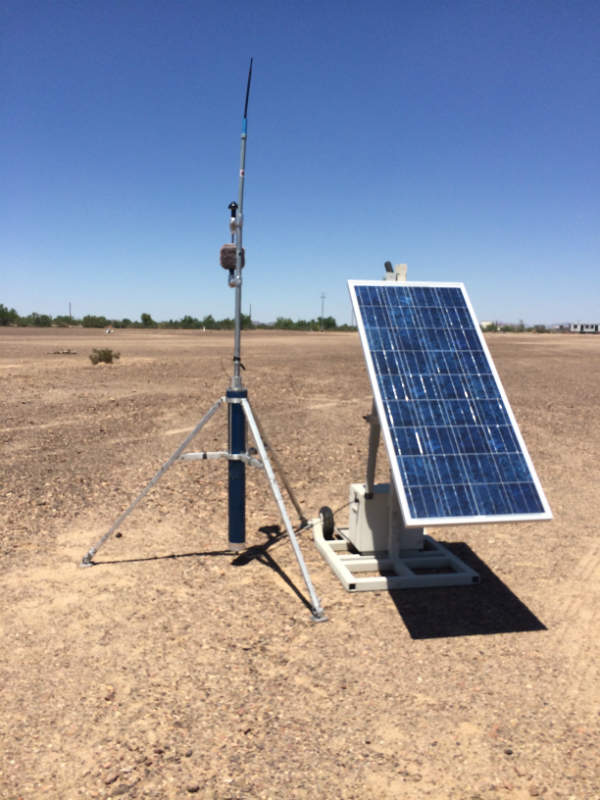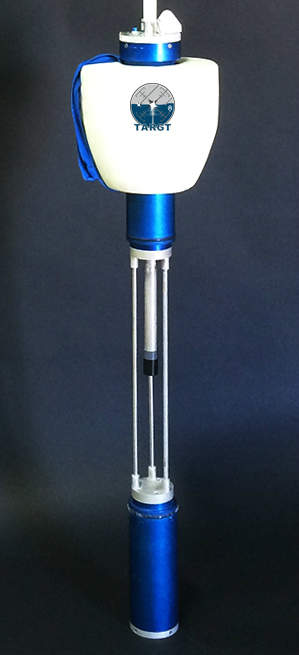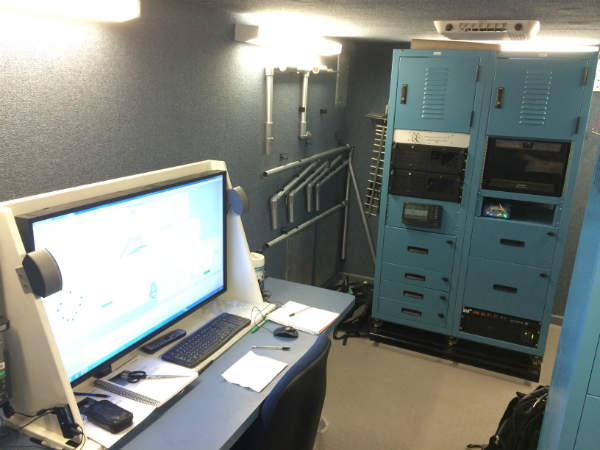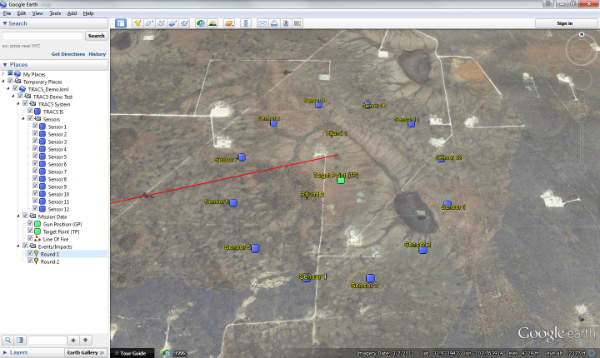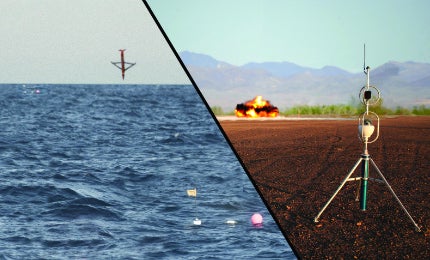
Trident Research provides solutions that utilize highly portable distributed sensors, to accurately locate the detonation or impact of direct or indirect fire munitions.
In comparison to shockwave systems, where functionality and performance are determined by how close a supersonic munition passes the sensor, Trident’s technology creates an invisible 2D or 3D region where any munition event can be scored.
Trident’s TRACS™ (land) or TARGT™ (sea) systems are suitable for gunnery training, forward observer or spotter assessment and training, and weapon testing on land or sea.
Acoustic technology for munition detonation scoring
Trident’s technology can be deployed on any type of platform, from crew-sized mortars to rotary and fixed wing aircraft, to brown and blue water naval ships. Single or multiple simultaneous firing platforms can use a single instrumented range.
Acoustic technology is ideally suited to provide munition detonation and impact scoring for combat units, requiring little to no training.
Only visual inspection and battery charging is required to prepare and deploy a highly accurate scoring network in any operational or forward-training area.
Real-time quantifiable results provide an accurate assessment of detonation location or miss distance for training gun crews and support personnel under real-world combat conditions.
Trident’s highly portable sensors can be placed in most any topological environment and operate in desert, arctic, or tropical conditions. The acoustic sensor technology is impervious to smoke, dust and debris, environments that are challenging for optics or radar-based technologies.
Using precision acoustics with sophisticated signal processing, Trident’s technology can localize a munitions detonation or impact event in any weather condition, day or night, rain or fog. Unlike radar and optics-based technologies, Trident’s acoustic technology is not hampered by moisture or ground reflection, making it ideally suited for real world combat conditions.
Fully automated lightweight remote sensors
Remote sensors are lightweight, self-surveying, have an onboard digital compass for orientation, and communicate in an ad-hoc network configuration, so the operator simply needs to activate the sensor to deploy it in the desired location.
No calibration, surveying, pointing, or precise placement is required. A 10km² test or training area can be established by vehicle or vessel in less than one hour (sea) or three hours (land) by a crew of two people.
Real-time communications between the distributed sensors and the central processing unit notifies the operator of the status and condition of the training or test area.
Single detonations or inert impact events are automatically scored and displayed in seconds. For multi-round munition scoring, such as for dispensed munitions, 30mm cannon, multiple small rocket firings, or multiple firing platforms, all detonation are automatically scored in minutes.
Results are distributed via keyhole markup language (KML) in any standard or custom coordinate frame and viewable in Google Earth™ or a custom or proprietary digital mapping system.
Accurate real-time single and multi-round munition scoring
For single-round munition scoring, real-time signal processing provides automated +/- 1m accurate results in seconds and post-mission data processing and analysis tools can provide sub-meter precise results in minutes.
For multi-round munition scoring, such as for dispensed munitions or multiple firing platforms, these same accuracies are achievable by adding the high-speed graphics processing unit (GPU) module to the command and control system.
Advanced mission planning and post-mission processing software suites are available for weapon testers to plan and extract sub-meter accurate results in minutes.
Turnkey systems for land and sea
Complete turnkey systems suitable for 8km² land and sea ranges can be provided for under $900,000 USD. Larger training or testing areas can be accommodated with additional remote sensors.
With a measured mean time between failures (MTBF) of more than 5,000 hours, the TRACS™ and TARGT™ systems have an operational design life of five years.
Trident’s online training program, 24-hour customer support, and affordable maintenance packages ensure 100% availability. Trident also offers scoring services by certified professionals for special test or training events.
Adaptable military test instrumentation systems
Trident Research scientists and engineers have more than 20 years of experience designing, developing, fielding, and sustaining specialized one-of-a-kind military test instrumentation systems.
Trident has a proven system engineering process based on US Department of Defense (DoD) guidance and a quality system fully compliant with ISO 9001:2008 standards. Trident can augment or adapt its acoustic technology-based system to any land or sea range, platform, or communicative environment.
US Government-licensed acoustic technology
Export of Trident’s acoustic technology requires licensing by the US Government per the Arms Export Control Act, including the International Traffic in Arms Regulation (ITAR) and the Export Administration Regulation (EAR). Exports can only be provided to authorized foreign government agencies through direct or Foreign Military Sales (FMS).
Trident’s acoustic technology has been fielded in support of the US Military since 2004.


